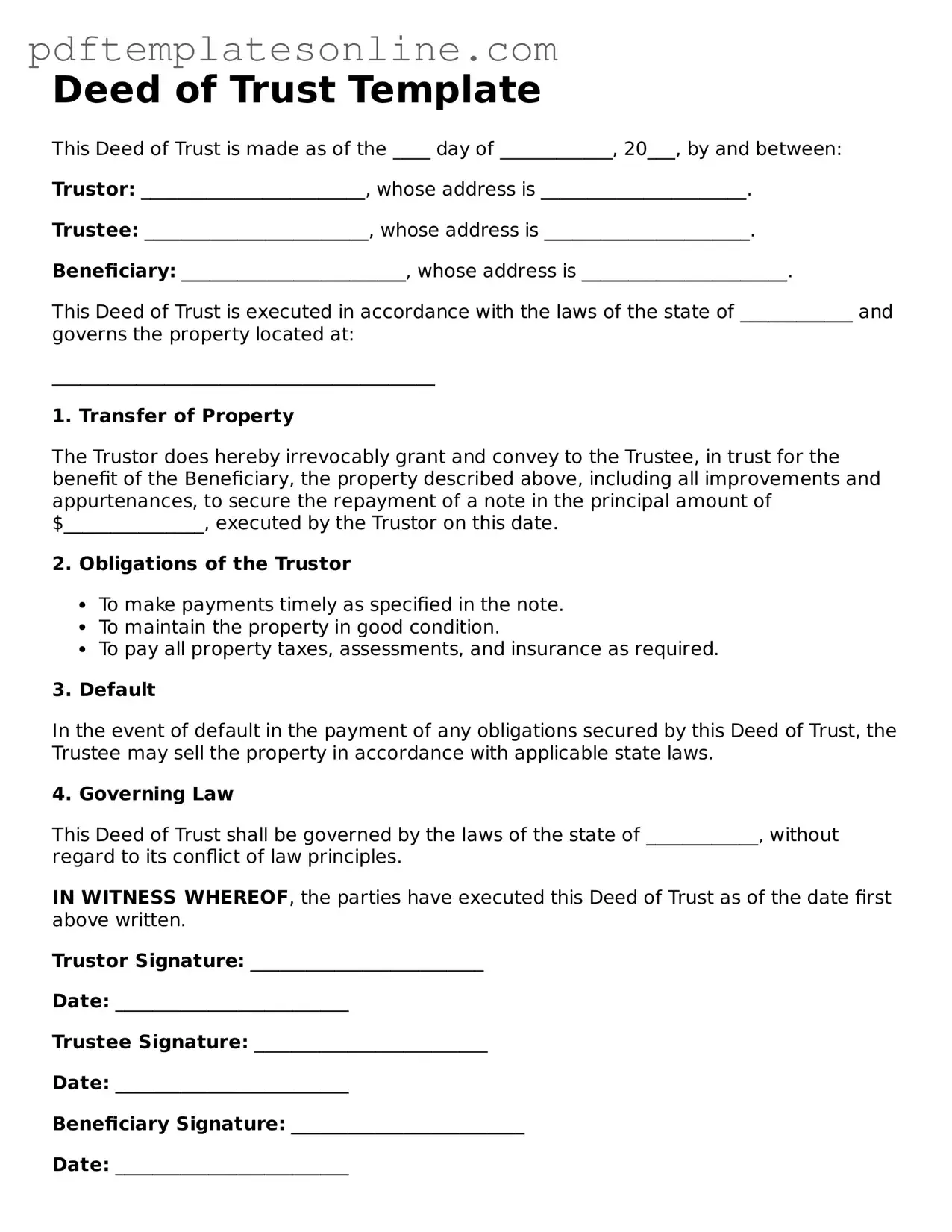Fillable Deed of Trust Document
A Deed of Trust is a legal document that secures a loan by transferring the title of a property to a third party, known as a trustee, until the borrower repays the loan. This arrangement provides protection for both the lender and the borrower. Understanding the details of a Deed of Trust is essential for anyone involved in real estate transactions or financing.
Access Deed of Trust Editor Now
